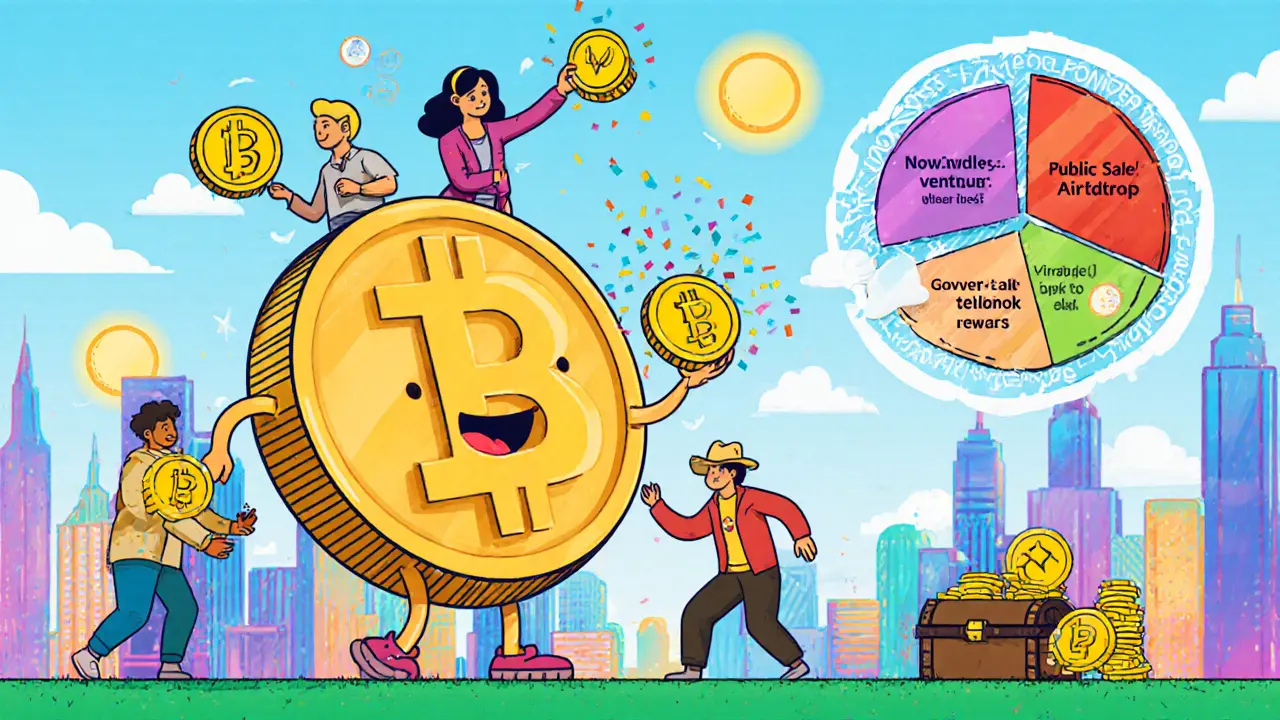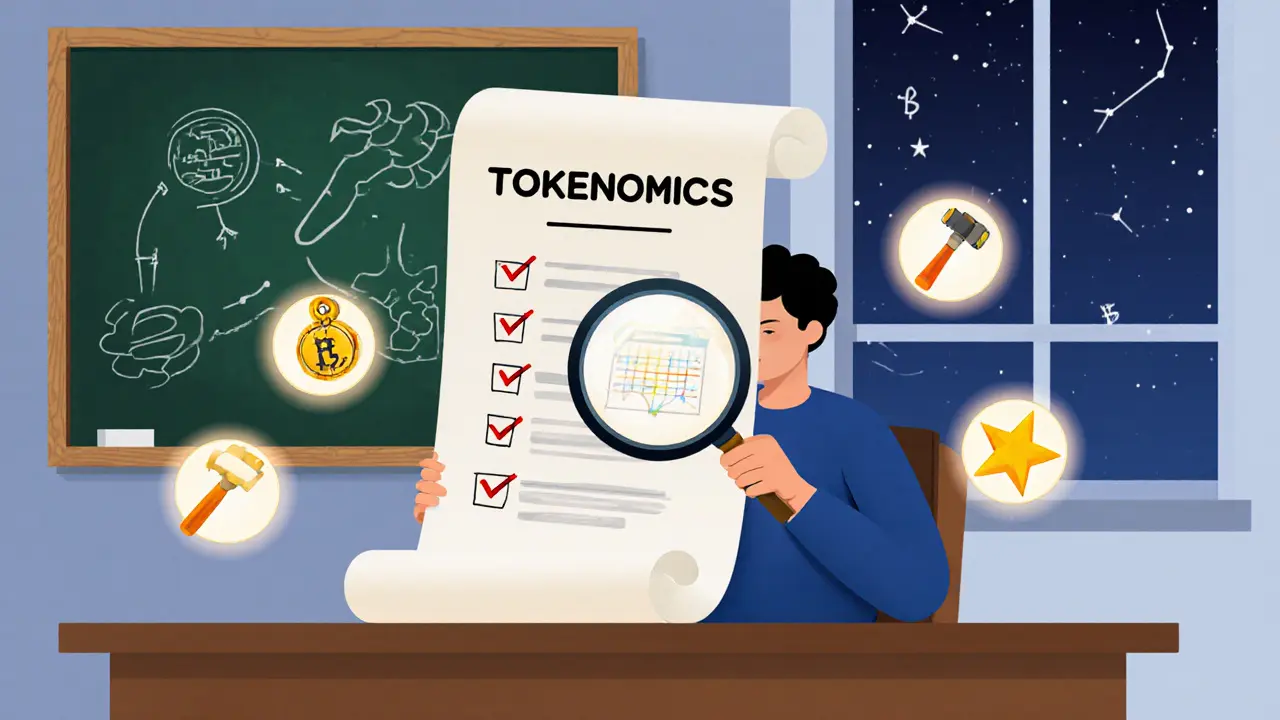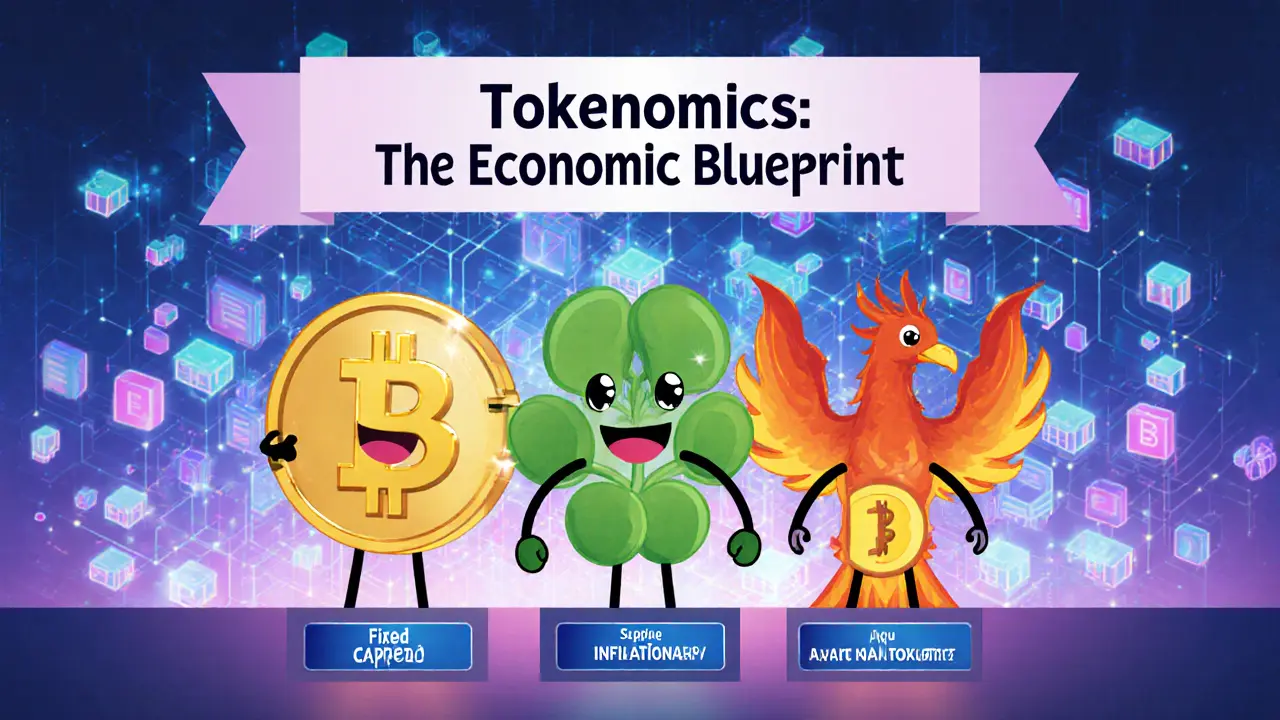Tokenomics Analysis Tool
Supply Model
Select the token supply model to analyze its impact on value.
Utility Focus
What is the primary utility of this token?
Distribution Plan
How is the token distributed among stakeholders?
Incentive Structure
What incentives encourage long-term holding?
Tokenomics Analysis Results
Tokenomics is the blend of “token” and “economics” that describes how a digital asset functions within its blockchain environment. It covers everything from how a token is created to why people hold it, acting as the economic DNA of a crypto project. Investors and developers alike lean on tokenomics to judge whether a coin can survive market swings or fade away.
TL;DR
- Tokenomics defines a token’s supply, utility, distribution, and incentives.
- Fixed supply often drives scarcity; inflationary models fund ongoing development.
- Utility can range from paying gas fees to voting on protocol changes.
- Clear distribution plans reduce speculation and build community trust.
- Analyze a project’s whitepaper for tokenomic details before investing.
Defining the Core Elements
Understanding tokenomics starts with a few key players:
- Cryptocurrency is a digital asset that uses cryptography to secure transactions and control the creation of new units.
- Token represents a unit of value or utility issued on a blockchain.
- Blockchain is a decentralized ledger that records all token transactions immutably.
From there, tokenomics zooms in on four pillars: supply, utility, distribution, and incentives.
Supply Mechanics: How Many Tokens Exist?
The supply side answers two questions: how many tokens will ever exist and how are new tokens introduced over time. Common models include:
| Model | Typical Use‑Case | Impact on Value |
|---|---|---|
| Fixed (capped) | Store‑of‑value coins like Bitcoin | Scarcity can drive price appreciation if demand rises |
| Inflationary | Utility tokens that fund continuous development (e.g., Ethereum’s ETH pre‑EIP‑1559) | Gradual dilution counters by expanding network utility |
| Deflationary (burn) | Tokens that destroy a portion of fees (e.g., Binance Coin’s quarterly burns) | Reducing supply can boost price if demand stays steady |
Supply schedules are usually hard‑coded into the protocol, meaning anyone can verify how many tokens will be minted or burned in the future.
Utility: What Can the Token Actually Do?
Utility is the practical reason someone keeps a token in their wallet. Common utilities include:
- Gas fees - paying for transaction execution on a smart‑contract platform.
- Access to exclusive services or content.
- Governance - voting on protocol upgrades or fund allocations.
- Staking rewards that secure the network.
When a token’s utility aligns with real‑world demand, the token tends to hold its value better than a purely speculative asset.
Distribution Mechanisms: Who Gets the Tokens?
Distribution determines how tokens are allocated among founders, early investors, community members, and the treasury. Typical allocation slices look like this:
- Founders and team - 10‑20% (often vesting over several years).
- Private investors - 15‑25% (subject to lock‑up periods).
- Public sale or airdrop - 30‑40% (to bootstrap network effect).
- Reserve treasury - 20‑30% (for future development, partnership grants, or ecosystem incentives).
A transparent distribution plan reduces the risk of sudden sell‑offs that can crash the price.

Incentive Structures: Why Hold or Use the Token?
Incentives are the behavioral nudges built into the protocol. They can be financial (staking yields) or non‑financial (governance power). Well‑designed incentives create a feedback loop where participants earn more token by supporting the network, which in turn strengthens the ecosystem.
Conversely, poorly calibrated incentives-like overly generous early‑bird rewards-can trigger massive dumping once vesting ends.
Reading Tokenomics in a Whitepaper
Before a project launches, the founders publish a whitepaper that serves as the primary source for tokenomic details. Look for these sections:
- Purpose - what problem does the token solve?
- Supply Schedule - total cap, emission rate, any burn mechanisms.
- Utility - specific functions like fee payment or governance.
- Distribution - exact percentages, vesting timelines, lock‑up terms.
- Incentive Model - staking rewards, liquidity mining, or other behavioral incentives.
Jumping straight to price charts without checking these fundamentals is like buying a car without reading the engine specs.
Common Pitfalls in Tokenomic Design
Even seasoned projects stumble into traps:
- Unlimited minting - leads to runaway inflation and erodes value.
- Concentrated holdings - when a few wallets control most supply, the market becomes vulnerable to manipulation.
- Utility mismatch - token used for too many unrelated purposes can confuse users and dilute demand.
- Vesting cliffs - large unlock events cause sudden price drops.
Spotting these red flags early can save you from costly mistakes.
Building Tokenomics for Your Own Project
If you’re thinking about launching a token, follow this quick roadmap:
- Define the core problem and the token’s role in solving it.
- Choose a supply model that matches the token’s purpose (fixed for scarcity, inflationary for growth).
- Map out utility cases-what actions will require the token?
- Design a fair distribution plan with clear vesting schedules.
- Craft incentive mechanisms that reward long‑term holding and network participation.
- Document everything in a transparent whitepaper and make the code auditable.
Testing your tokenomic model with simulations or game‑theory tools can highlight unforeseen dynamics before you go live.
Quick Tokenomics Checklist
- Is the total supply clearly capped or inflation‑controlled?
- Does the token have a real, on‑chain utility?
- Are distribution percentages and vesting periods public?
- Do incentives align user behavior with network health?
- Has the whitepaper been peer‑reviewed or audited?
Ticking these boxes doesn’t guarantee success, but it dramatically raises the odds of a sustainable project.
Why tokenomics Matters for Your Wallet
When you know a token’s supply curve, utility, and incentive levers, you can separate hype from genuine value. That knowledge lets you set realistic expectations, avoid panic‑selling, and position yourself for long‑term gains.

Frequently Asked Questions
What is the difference between a token and a coin?
A coin runs on its own blockchain (e.g., Bitcoin), while a token lives on top of another blockchain (e.g., USDT on Ethereum). Tokens inherit the security and infrastructure of the host chain.
How can I verify a project's token supply schedule?
Check the smart‑contract code on a block explorer or read the tokenomics section of the whitepaper. Most projects publish a token‑generation event (TGE) schedule that details future minting or burning.
Why do some tokens burn a portion of every transaction?
Burning permanently removes tokens from circulation, creating a deflationary pressure that can support price if demand stays steady. It also signals a commitment to long‑term scarcity.
Can tokenomics change after launch?
Yes, but changes require a governance process or a hard fork, both of which are costly and risky. Transparent projects outline any potential amendment mechanisms upfront.
What red flags should I watch for in a token’s distribution?
Watch out for large percentages allocated to founders without vesting, massive private sales that lock up most supply, or unclear community allocation. These can lead to sudden sell‑offs.
How does staking affect token supply?
Staking locks tokens in a contract, reducing the circulating supply while rewarding participants with newly minted tokens or transaction fees. This can create an upward pressure on price if demand stays constant.


Millsaps Delaine
The architecture of tokenomics, when examined through a lens of sophisticated economic theory, reveals layers of nuance seldom appreciated by the lay investor. One must first acknowledge the immutable law that supply elasticity directly dictates market perception of scarcity. Fixed supply mechanisms, exemplified by Bitcoin, function as a digital analogue to precious metals, engendering a psychological premium. Conversely, inflationary models, while ostensibly dilutive, can be justified through the perpetual funding of protocol development. Deflationary constructs, achieved via systematic token burns, introduce a countervailing force that recalibrates equilibrium. Yet, the mere presence of a burn schedule does not guarantee value appreciation; it must be coupled with demonstrable utility. Utility, ranging from gas fee settlement to governance voting, serves as the principal demand driver. Tokens that merely exist as speculative vessels risk rapid obsolescence in the face of regulatory scrutiny. Distribution matrices, when disclosed with crystalline transparency, mitigate the specter of insider dumping. Allocations exceeding thirty percent to founding teams without vesting are a red flag of potential market manipulation. Incentive alignment, whether through staking yields or liquidity mining, creates a positive feedback loop that rewards network participation. However, overgenerous early‑bird rewards often precipitate sell‑offs once vesting cliffs are reached. The whitepaper, therefore, must articulate each component-supply schedule, utility, distribution, incentives-with rigorous quantification. Auditable smart‑contract code further solidifies investor confidence by allowing independent verification of emission curves. In practice, a well‑engineered tokenomic model behaves as a self‑sustaining ecosystem, where participants are simultaneously users and shareholders. Ignoring these fundamentals is tantamount to gambling with one’s capital on a house of cards.